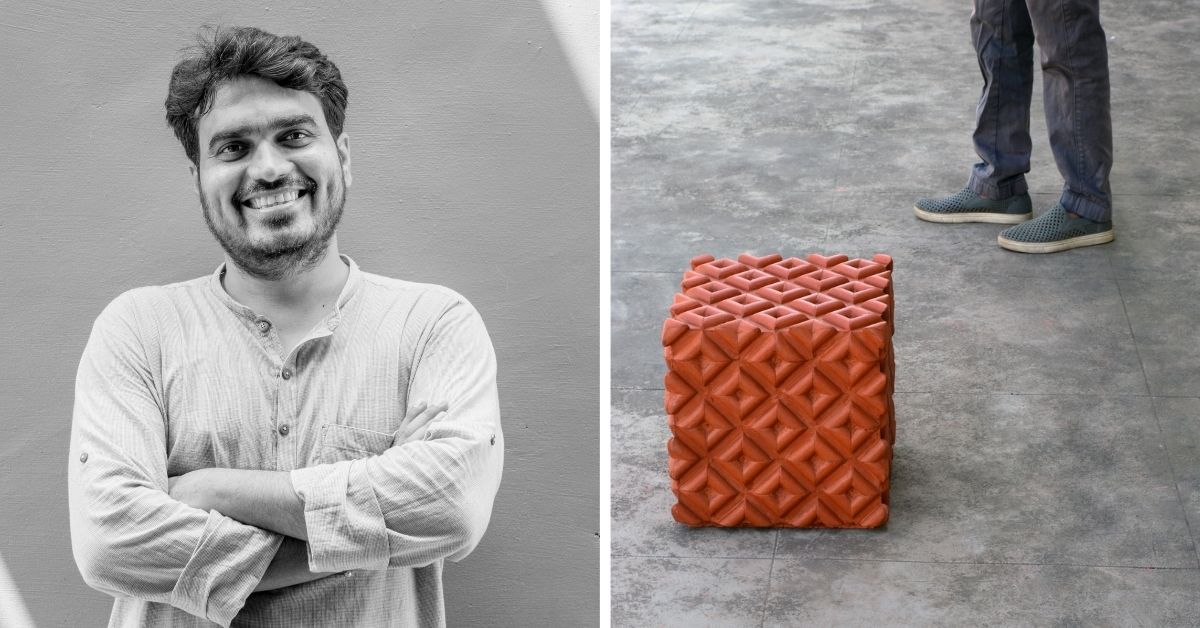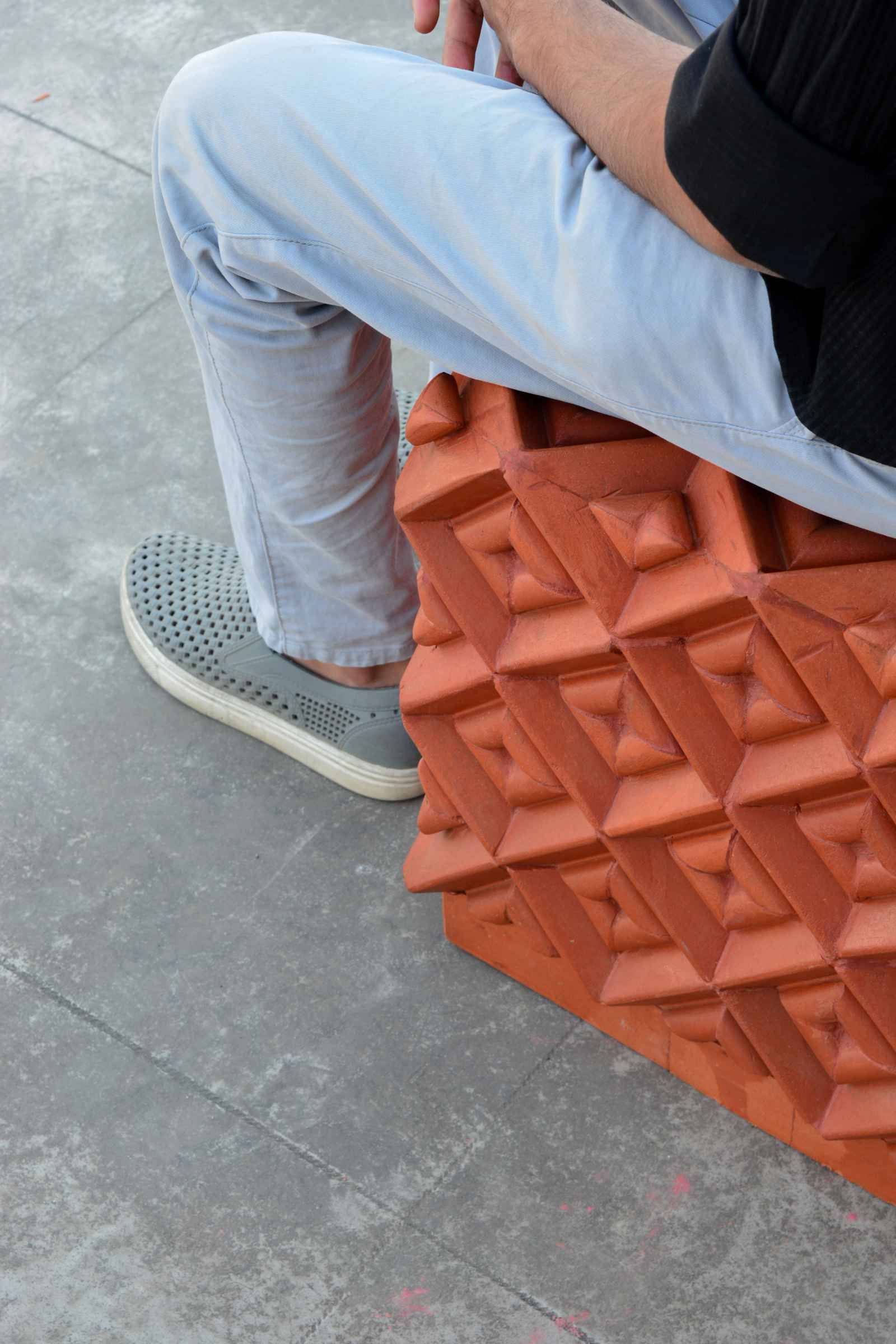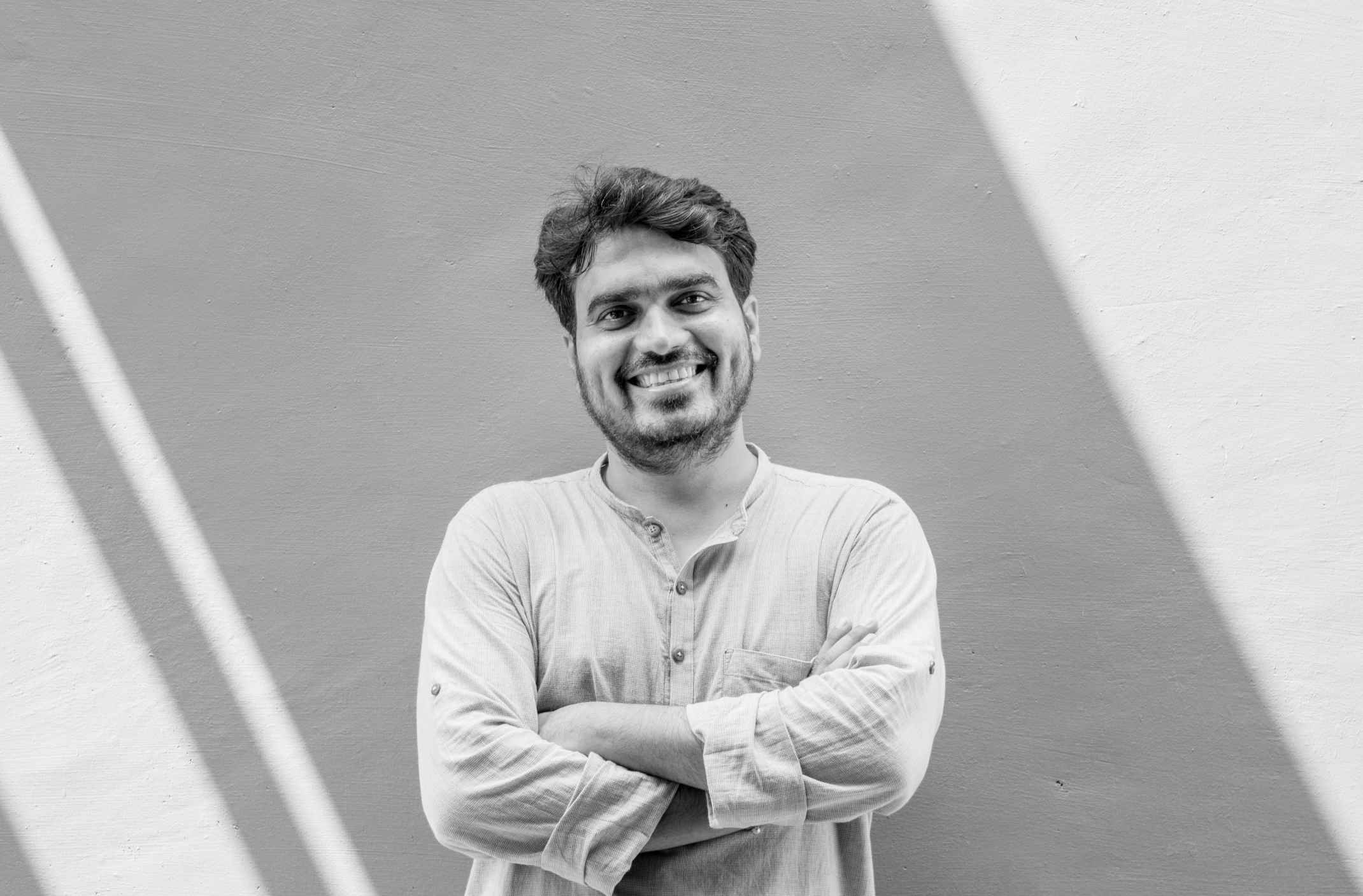Architect Turns Clay Roof Tiles Into Unique Furniture That Stays Cool in Summer
A new life for the famous 'Mangalore Tiles'. Manoj Patel is an Ahmedabad based architect whose unique clay roof tile-based furniture is garnering a lot of interest.

There is no limit to what one can imagine and create. What would you say to furniture being made out of clay roof tiles?
Gujarat based architect Manoj Patel, who is known for making extraordinary items out of ordinary things, has chosen to work with clay roof tiles to create stunning pieces of furniture.
“Working with eco-friendly material in such a way that it stays affordable is our strength,” Manoj tells The Better India. Over the years the architect has worked with various kinds of material to ascertain what would work best for the climatic conditions we live in.
He says that while usually stone and metal are used for outdoor furniture, these are high heat conductors.

“The furniture pieces made from these materials become usable only after sunset when there is no direct sunlight. Else, sitting on these is next to impossible. This was the problem that we wanted to address when we started working with materials like clay and wood that are non-conductors,” he adds.
A graduate from DC Patel School of Architecture (APIED), Vallabh – Vidhyanagar, Gujarat, in 2012, Manoj pursued his post-graduation in Climate Change and Sustainable Development in 2014 from CEPT University, Ahmadabad, Gujarat.
“I have always been keen about climate responsive architecture, which has always reflected in my work as well,” he says.
Using Climate Appropriate Material

Clay has been used as a construction material for centuries. Its robustness and sturdiness ensure that the lifespan of the construction lasts for over a century. While typically clay has been used to tile the roof, pottery and floor tiles, Manoj is looking at ways of using this durable material to make furniture pieces.
Manoj and his team transformed the existing profiles of numerous clay tiles into playful optical illusions that resemble a natural volumetric mass, to form outdoor chairs and benches as a backdrop against rustic spaces. “We started work on this a while ago but in the last six months we gave the idea a shape,” he says.
He continues, “Up until now, I haven’t come across any design house or architect using clay in furniture. These are just perfect to beat the scorching heat we are facing nowadays. While using clay does help in bringing down the indoor temperature, in some of the work we have undertaken the clients have completely done away with the use of air-conditioning as well.” The advantage of using clay to make furniture and use it in summers is that it allows the surface to remain cool.
So far, the team has developed a table top, stools and various kinds of surfaces as well. “This is an all-season material and can comfortably be used even through monsoon season,” he says. It is also cost-effective and Manoj says that one tile costs between Rs 5 to Rs 8. On average 200 tiles are used for a piece of furniture, which will cost under Rs 2,000.
“The main thing in all of this is the craftwork that the artisans bring in,” he says. While the firm is not commercially selling these pieces of furniture they are working with other design and architectural firms who use these furniture pieces in their work. “We are not looking at any sort of mass production of these pieces. Each one is a labour of love and handcrafted by our artisans,” he says.
Challenges Along the Way

Even though clay as a material has been used in construction for decades now, using it to make furniture was new and challenging, says Manoj. “Making a simple stool turned out to be rather challenging. The geometry and pattern of the stool were difficult to get right. A simple task of getting the corners aligned turned out to be rather laborious,” he says.
He adds that just to get it right, the team took close to three months. “We also revised the design multiple times. After all, what is heartening is how popular this piece of furniture has become. Having started by making one stool a day, today, we make about five such stools every day.” Having started with three skilled artisans, the design house today employs over 25 artisans.
The clay tiles being used are referred to as Mangalore clay tiles. “Slowly with the construction landscape changing the use of these tiles decreased. That also led to a sudden decline in the manufacturing of clay tiles. We eventually found that these tiles were being manufactured in Morbi, Gujarat,” he says. From 2010 to 2012 there were over 300 manufacturing units in Morbi. However, this number steadily kept declining.
In 2015, it was down to 100 units and subsequently, the number came down to 10 in 2018. “Now, over the last few years, because there is a general demand for these tiles, the number of units has picked up to 30. This is an encouraging sign and we are hoping to further get these numbers up,” says Manoj.
Concerning sustainability, Manoj says, “There is a lot of lip service when it comes to sustainable practices. While everyone wants to be known for doing something not many do. The tangible benefits of using such material are something that everyone must experience to understand.” He goes on to say that the role of sustainability crusaders is to keep innovating and coming up with new ideas to take to the clients. “We need to start walking the talk,” he concludes.
(Edited by Yoshita Rao)
If you found our stories insightful, informative, or even just enjoyable, we invite you to consider making a voluntary payment to support the work we do at The Better India. Your contribution helps us continue producing quality content that educates, inspires, and drives positive change.
Choose one of the payment options below for your contribution-
By paying for the stories you value, you directly contribute to sustaining our efforts focused on making a difference in the world. Together, let’s ensure that impactful stories continue to be told and shared, enriching lives and communities alike.
Thank you for your support. Here are some frequently asked questions you might find helpful to know why you are contributing?


This story made me
-
97
-
121
-
89
-
167











